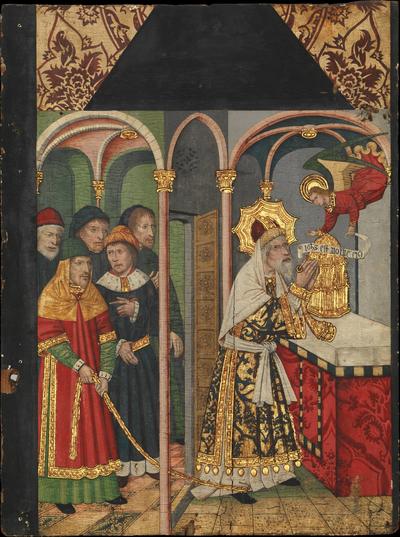The Saint and the Zohar


Panel with the Angel Appearing to Zacharias (from a Retable depicting Saint John the Baptist and scenes from his life)
Domingo Ram (Spanish, Aragon, active 1464–1507)
The Metropolitan Museum of Art, The Cloisters Collection, 1925. www.metmuseum.org.
We often think of Jewish life in Spain in terms of the massacres of 1391 and the Spanish Expulsion in 1492. But the art made for the Church between those two dates presents a more nuanced view of Christian–Jewish relations. Many of the 15th-century painters who worked for the Church in Spain adopted the conceit that the communal spaces of Jewish life—the synagogue and the Jewish quarter—could represent the ancient Temple and the Holy Land in paintings of the lives of Jesus and the saints, and that contemporary Jews could be stand-ins for those who lived during the early centuries of Church history. As a result, 15th-century Spanish altarpieces are a rich source of information on synagogue interiors and the ceremonial art used there. In the altarpieces, the Jews of Spain become living, breathing individuals, rather than mere names.
The origins of the Christian subject illustrated here, the Annunciation to Zacharias (father of St. John the Baptist), are even more complex. Zacharias is depicted as the High Priest on Yom Kippur, alone in the Holy of Holies. Much of what we know about the Yom Kippur service in the Temple comes from earlier sources such as this week’s parashah, but one detail in the painting is derived from a later text. The Zohar, written or compiled in late 13th-century Spain, tells of a golden chain that was attached to the High Priest’s leg in order to pull him from the Holy of Holies if he died while performing his duties. The inclusion of that detail in this altarpiece—dated 1464 or later—reveals that some of the contents of the Zohar were known in Spain—by Christians—just 150 years after its compilation.



